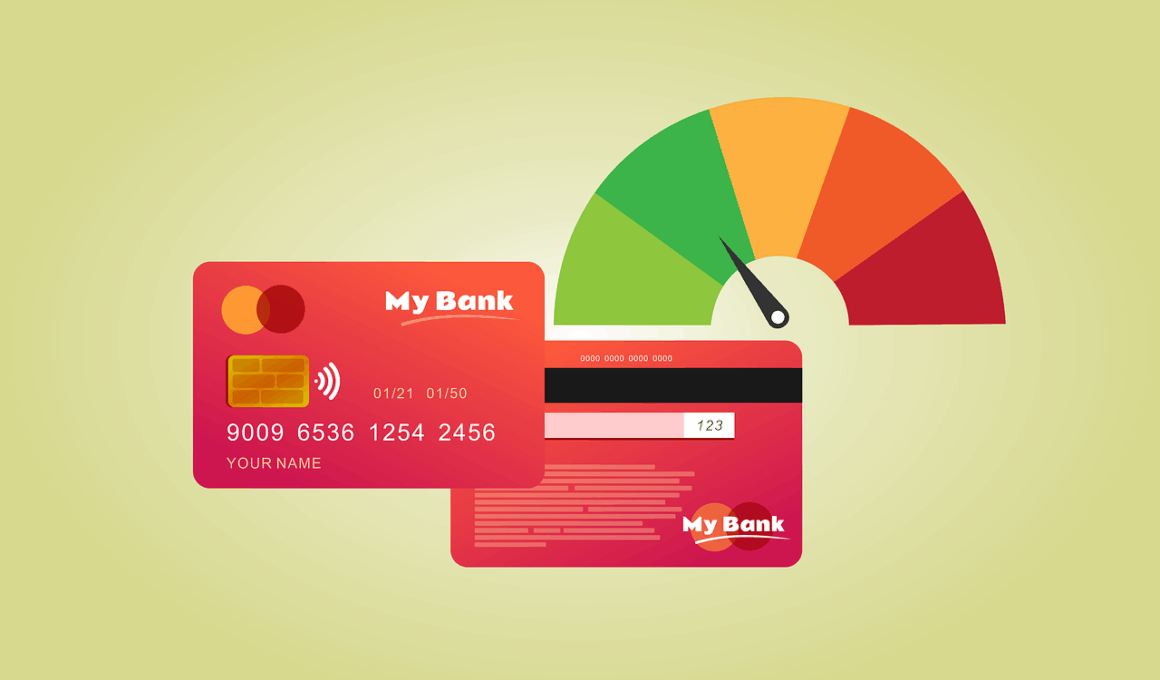The Role of Alternative Data in Enhancing Credit Scoring Accuracy
The concept of credit scoring traditionally relies on historical financial data such as payment history, credit utilization, and the length of credit history. However, as financial landscapes evolve, the limitations of conventional data become increasingly evident. Alternative data presents an opportunity for lenders to enhance their credit scoring models, thereby improving decision-making processes. This includes information gathered from sources like social media activity, utility bills, and rental payments. By incorporating these diverse data points, lenders can formulate a more nuanced assessment of an applicant’s creditworthiness, particularly for individuals lacking extensive credit histories. Furthermore, alternative data has the potential to identify creditworthy individuals who might have been overlooked by traditional scoring methods. This is especially important in serving underbanked communities, where access to credit provides significant opportunities for financial empowerment. Ultimately, the use of alternative data not only enriches the credit assessment process but also supports financial inclusion by providing tailored opportunities to a broader population segment. As such, alternative data is becoming an essential tool for lenders aiming to refine their risk assessment methodologies.
One of the most compelling benefits of using alternative data for credit scoring is its ability to promote financial inclusion. Traditionally, many individuals are unable to access credit services due to a lack of credit history or poor credit scores, often caused by limited financial resources. By integrating alternative data sources, lenders have the opportunity to evaluate a broader range of individuals, many of whom have otherwise been marginalized within the financial system. For instance, individuals with a strong history of timely rent payments may be capable of repaying loans even if they haven’t utilized traditional credit products. Moreover, alternative data can offer deeper insights into consumer behavior, revealing patterns that are not visible through traditional credit histories. This allows lenders to understand potential risks more effectively while simultaneously identifying reliable borrowers. The increased accuracy offered by this enhanced data can help reduce default rates, thereby benefiting both lenders and borrowers in the long run. Ultimately, embracing alternative data can lead to more responsible lending practices and create a more inclusive financial ecosystem that caters to diverse consumer needs.
Types of Alternative Data
Various types of alternative data can be utilized to enhance credit scoring accuracy, each providing unique insights into a borrower’s financial behavior. Some commonly used sources include transaction data from bank accounts, which can highlight spending habits and income stability. Additionally, utility payment histories can demonstrate an applicant’s reliability in managing regular expenses. Social media activity, while somewhat controversial, can also serve as a potential indicator of a person’s social responsibility and reliability. Other forms of data include insights from behavioral analytics, which examine how individuals interact with online banking systems and credit applications. For example, potential borrowers who engage proactively with their finances may be deemed less risky compared to those who exhibit erratic behaviors. Furthermore, alternative data derived from demographic factors or geographic locations can provide context about applicants’ circumstances, enabling lenders to make more informed decisions. The incorporation of such diverse information not only enriches the credit scoring model but also contributes to a more equitable evaluation process that recognizes diverse financial backgrounds and experiences.
Despite the numerous advantages of utilizing alternative data, its incorporation into credit scoring practices is not without concerns. Privacy issues, data accuracy, and potential biases all raise significant questions about how these data sources are leveraged. Consumers may be unaware that their personal information is being used for credit assessments, leading to concerns about data consent and transparency. Furthermore, the quality and reliability of some alternative data might fluctuate, thereby affecting credit assessments negatively if incorrect information is applied. Bias in algorithmic decision-making is another significant concern, as utilizing alternative data may inadvertently reinforce existing societal biases, thereby disadvantaging certain demographic groups instead of promoting equality. To mitigate these risks, it is crucial for financial institutions to adhere to strict ethical guidelines, employing regular audits to ensure the data used is both accurate and responsibly applied. Transparency in how scoring models are developed and how data is aggregated can strengthen consumer trust and improve engagement. Navigating these challenges thoughtfully is essential for leveraging alternative data as a means of enhancing credit scoring while protecting consumers’ rights and financial wellbeing.
The Role of Technology
The advancement of technology plays a pivotal role in enabling the integration of alternative data into credit scoring systems. Machine learning algorithms, big data analytics, and artificial intelligence significantly enhance how lenders process and evaluate large volumes of diverse data sources. These technologies allow for real-time assessments of creditworthiness by analyzing patterns and trends that are often too complex for traditional methods. For example, lender platforms can utilize predictive models to accurately ascertain risk factors based on the identified behavior patterns drawn from alternative data sources. This results in faster loan approvals and seamless user experiences for applicants. Moreover, technology also facilitates the ongoing monitoring of borrowers’ behavior, allowing financial institutions to reassess credit profiles continuously rather than relying on static data points. Innovations in blockchain technology are also gaining traction, as they hold the potential to secure and validate alternative data sourced from various platforms. Therefore, technological advancements are not only reshaping the landscape of credit scoring but are also responsible for driving the dynamic use of alternative data in credit assessments, fostering efficiency and greater accessibility.
Regulatory frameworks surrounding alternative data in credit scoring are still evolving, as governments and institutions strive to balance innovation with consumer protection. As the usage of alternative data grows, policymakers need to establish clear guidelines that educate both lenders and consumers about their rights and responsibilities. Crafting regulations that facilitate responsible usage while preventing discrimination or data misuse is paramount. This includes creating standards for how alternative data can be collected, analyzed, and shared between financial institutions. Additionally, ensuring that consumers have access to their credit scores is vital for promoting transparency within the credit ecosystem. Such measures also empower consumers to challenge inaccuracies and understand the factors that influence their creditworthiness better. An inclusive regulatory approach will not only guide traditional lenders but will also support fintech companies exploring innovative credit scoring methodologies. Ensuring that regulations are adaptable to technological advancements while maintaining fairness and equity will encourage sustainable growth in alternative data usage within the industry, ultimately fostering a healthier financial environment for all stakeholders involved.
Future Directions
Looking ahead, the future of credit scoring is likely to evolve significantly as more financial institutions adopt alternative data practices. This transition will likely lead to an enhanced understanding of creditworthiness, reducing reliance on conventional metrics and expanding credit opportunities to broader demographics. The growing acceptance of alternative data may foster healthier relationships between consumers and financial institutions, as greater accuracy diminishes the stigma often associated with having limited credit history. As technology continues to evolve, we can expect emerging trends such as the integration of biometric data or psychometric testing in credit scoring assessments, opening new avenues for evaluation beyond traditional methods. Additionally, global collaboration across borders may lead to the standardization of alternative data practices, creating a more interconnected global finance landscape. However, maintaining a responsible approach is crucial, ensuring that advancements are balanced with strong ethical standards and consumer protections. Ultimately, the successful incorporation of alternative data relies on the commitment of the financial services industry to prioritize fairness, transparency, and inclusivity as they navigate these exciting developments in credit scoring.
In conclusion, the integration of alternative data into credit scoring represents a transformative approach in the banking and financial services sector. By enriching traditional credit assessments with diverse data sources, lenders can enhance their decision-making processes and promote financial inclusion. While the benefits are significant, it is essential to address the accompanying challenges, particularly in terms of privacy and algorithmic bias. Balancing innovation with ethical considerations remains a crucial aspect of successfully adopting alternative data in credit scoring models. As technology marches forward and regulatory frameworks catch up, the industry has an opportunity to redefine credit scoring for the better, allowing a more diverse array of borrowers access to financial products. Through responsible practices and an unwavering commitment to transparency, lenders can ensure that alternative data serves as a positive force within the financial landscape. Ultimately, the evolution of credit scoring will craft an inclusive and fair environment where all consumers can thrive, regardless of their previous financial experiences. Embracing this shift will benefit both lending institutions and borrowers, paving the way for a more equitable financial future.


